A weekend walk in Diliman
I finally got to visit my favorite green space in the metropolis a few weeks ago: the UP Diliman campus. The pandemic lockdowns have kept us imprisoned in our homes, or at least our neighborhoods, for the last two years. In a break from the horrible weather we’ve been having, I managed to get in a whole afternoon’s stroll at my alma mater, and it was worth the effort.
In the 1970s students would go up the observatory’s open roof deck, although I believe they were there to gaze at each other’s eyes and not the stars above.
I took my stroll around the University Loop, which had been converted to a weekend pedestrian zone years before the pandemic. The majestic, 70-year-old acacias provide the ideal canopy under which to get much-needed physical and psychic exercise. Along the way I noted much that has changed in a university that will be seen for the first time by freshmen and sophomores.

Parking near the College of Home Economics, I first took a look at a landmark that I’d not seen in a long time, the Astronomical Observatory. The art deco-styled facility is run by DOST’s PAGASA and is open to the public by appointment. I remember that in the 1970s students would go up the observatory’s open roof deck, although I believe they were there to gaze at each other’s eyes and not the stars above.

I started my walk at the central loop’s eastern end by Benitez Hall. The College of Education is housed in this elegant, neoclassic structure designed by noted architect Juan Arellano of Metropolitan Theater and Manila Post Office fame. It was completed, along with its twin opposite, before the start of World War II. Japanese forces used the two buildings in the war. From liberation until 1949, the buildings, as well as the larger campus, housed US military personnel and materiel. The hall was named after the college's first dean, Francisco Benitez.
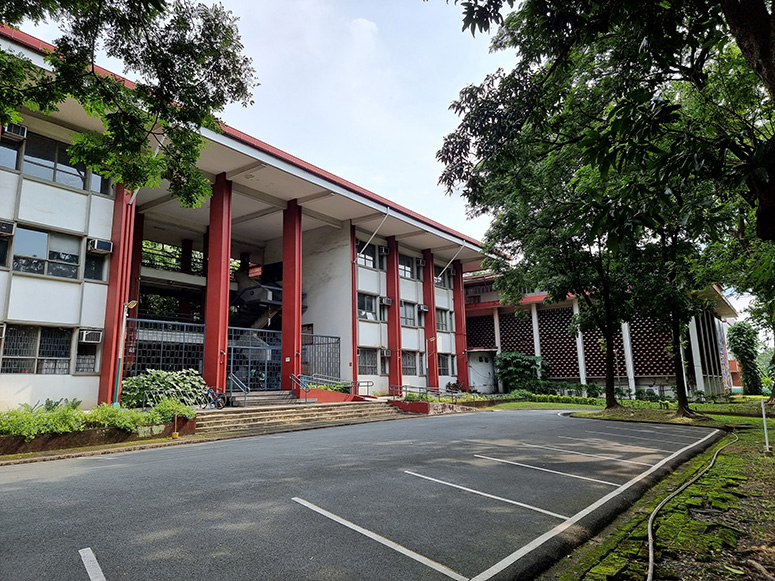
I proceeded west to what I used to know as the College of Business Administration (or “BA,” for short). The structure is now two departments: Benton Hall and its adjunct, Lagmay Hall. The mid-century modern structure with distinctive sunscreens was turned into the Office of the University Registrar for a few years. Benton hall, named after Guy Porter Benton, third president of the university, is the Office of the Center for International Studies and the Gender Office. Lagmay Hall beside it was named after Alfredo Lagmay, noted psychologist and professor at the university. It hosts the Colleges of Psychology and Social Sciences.
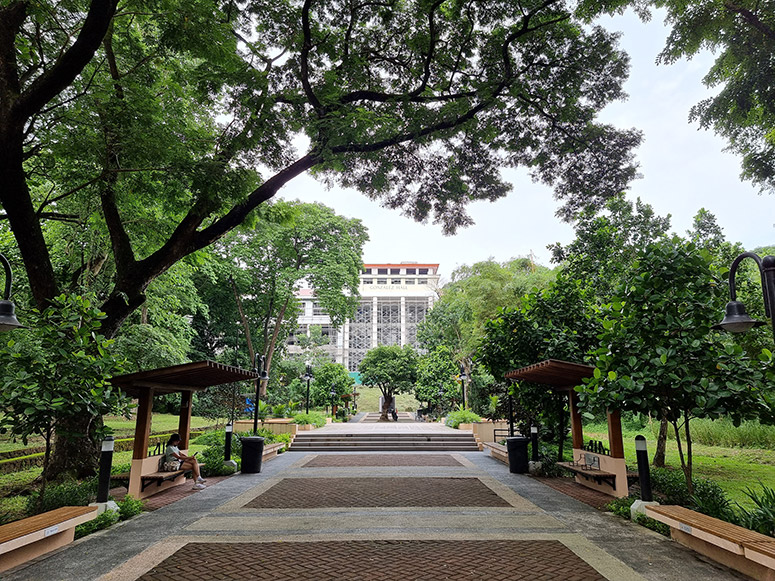
After this complex is Palma Hall (our old AS building). I had visited this on an earlier jaunt, so I turned right to look at the newly renovated Beta Way. Built by the Beta Epsilon Fraternity 1952, it started as a simple gravel path connecting Palma and Melchor Hall. It was paved in 1961 and repaired sporadically over the decades before this apparently recent fix-up. At midpoint the walk connects to the east to a new (and welcome) promenade and garden plaza in front of Gonzalez Hall, the main library. This addition was a project of the Upsilon Sigma Phi fraternity. Fantastic!
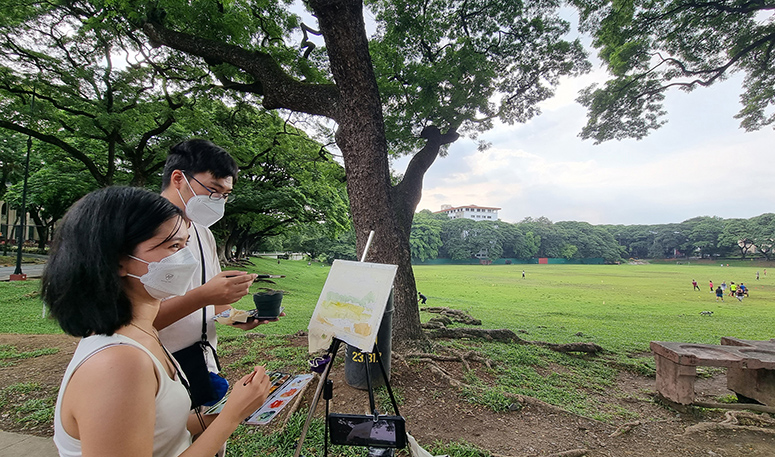
Since Gonzales Hall, the main library, was boarded up for repairs, I worked my way back to the Sunken Garden in front of Benitez Hall. Formally named The General Antonio Luna Parade Grounds, the five-hectare field anchors the northern end of the UP Academic Oval. It sits on a natural depression. Contrary to public speculation, there is no fault line underneath. Dr. Mahar Lagmay of the UP NIGS clarified this. Landmark buildings define the space: the Malcolm and Benitez Halls to its north and south, as well as Gonzales Hall, which forms its western edge. The UP ROTC has used the space as its marching field since 1949.
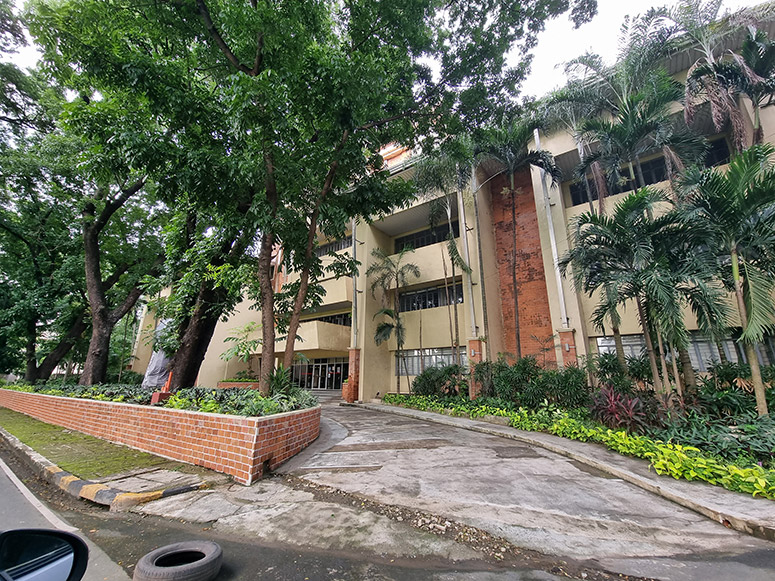
A grandstand designed by my UP College of Architecture professor Froilan Hong was added in 2004 using funds donated by Alumni Vicente Quimbo. The garden was the venue for the traditional Cadena de Amor event of the UP Woman’s Club until 1968, but that was discontinued. Today it serves as a setting for the annual Latagaw Cup soccer matches and other field sports (I caught a group playing American football.)
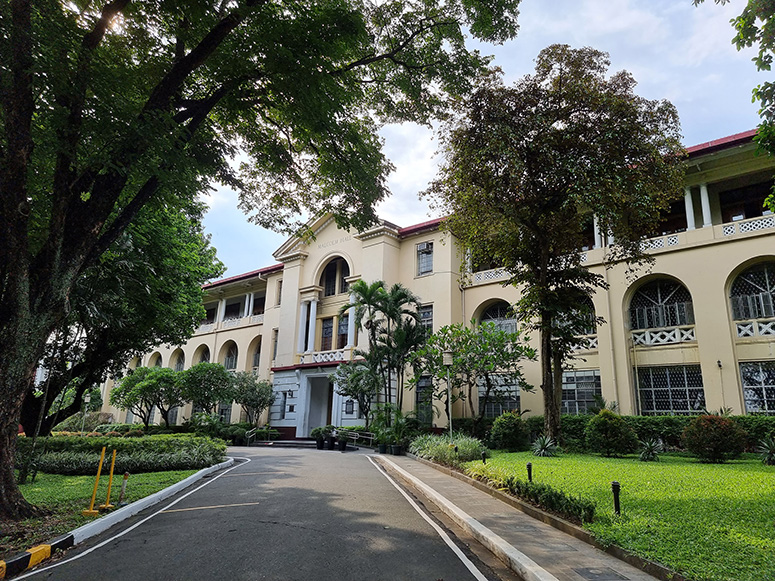
Nearby is Vinzons Hall. The university’s student-union building was completed in 1958, providing space for students’ organizations and their activities. It was named after Wenceslao Vinzons, pre-war Student Council president and editor of The Collegian, who fought the Japanese as a guerilla leader before being caught and killed. The building has been renovated and a new, seven-story annex built over what used to be the university bookstore and cafeteria. The building is architecturally notable for its mid-century modern façade and brise soleil (sunshade screen).
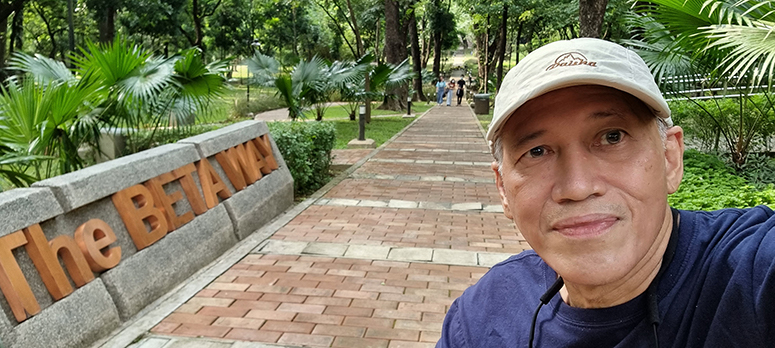
North of Vinzons is The College of Business Administration complex, or BA, which moved to this modernist building in the late 1970s. Designed by UP College of Architecture professor Victor Tiotuyco, the building is known for National Artist Napoleon Abueva’s futuristic sculpture, “Sprit of Business.” The building was named after UP alumnus, former Minister of Finance and Prime Minister Cesar Virata.
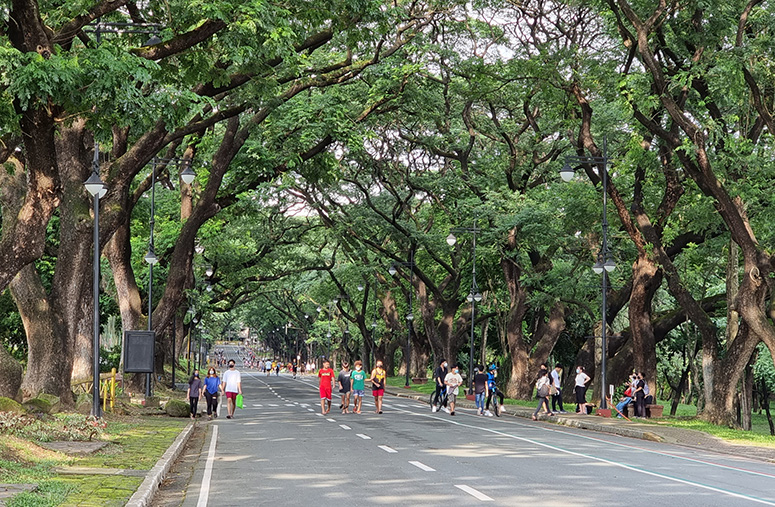
I end this first half of my tour with Malcolm Hall, the twin of Benitez Hall. Arellano designed both buildings in the neo-classic style similar to the original Padre Faura campus buildings (a future tour is in the offing for this). The building houses the College of Law and was named after George Malcolm, who was the first dean of the college. It is also home to the University of the Philippines Law Library. Behind the building is Bocobo Hall, completing the College of Law complex.
I will continue with this Dili-walk next week for the landmarks of the rest of the campus.



